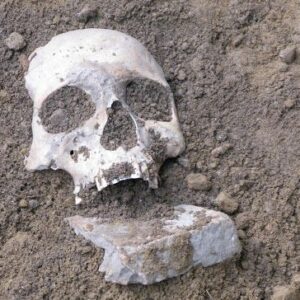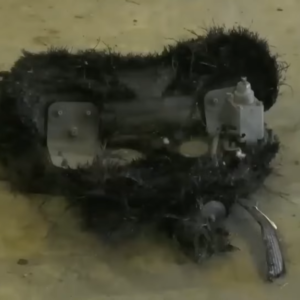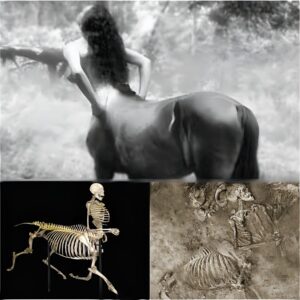WATCH VIDEO BELOW
Unraveling Prehistoric Mysteries: From Megalosaurus to the Cousin of the Wildebeest

The video begins with Katrina introducing the fascinating world of dinosaurs, highlighting the discovery of over 1,000 species since the 19th century. In the early 1800s, the general belief was that Earth was flat and the center of the universe. This perception was challenged when William Buckland became the first person to name a dinosaur in a paper he published in 1824. He called the creature Megalosaurus, which translates to “great lizard” in English, and in Vietnamese, it is known as “thằn lằn lớn.” This discovery was both exciting and fortunate, as Megalosaurus was one of the earliest fearsome creatures, living 155 million years ago during the Middle Jurassic period in Europe. Measuring 30 feet long and weighing around 2,200 pounds, it was a formidable predator, equipped with oversized, razor-sharp teeth capable of chomping through bone.

The video then transitions to the world’s first predator, an ancient relative of the modern jellyfish. Scientists believe they have identified the earliest creature to realize that hunting other animals was easier than grazing for nutrients. This prehistoric predator lived 560 million years ago and is related to both jellyfish and corals. To commemorate this remarkable discovery, researchers named the creature Aurora Lumina attenbori in honor of Sir David Attenborough. Found in the fossil-rich Charnwood Forest of England, this ultimate predator existed right before the Cambrian Explosion—a period when life forms began to proliferate in ways never seen before.

Next, the video explores the mysterious Dinokyrus, one of the most enigmatic creatures of the Mesozoic era. This dinosaur was first discovered in Mongolia in 1965 when researchers found a pair of arms unlike anything they had ever seen—measuring an astonishing 8 feet from shoulder to wrist and ending in three-fingered hands equipped with claw-like appendages. Initially believed to belong to a new kind of theropod predator, researchers had only these long arm bones to study, leaving much of its identity a mystery. However, in 2015, two new Dinokyrus specimens were uncovered, allowing scientists to reconstruct the full body of this “terrible arm” dinosaur. It turned out to be a bizarre bird-like lizard that lived in Asia around 100 million years ago. Measuring 40 feet tall and weighing 7 tons, Dinokyrus was likely a herbivore, using its long arms and claws to gather plant matter. Interestingly, despite its enormous size, Dinokyrus had an incredibly small brain, making it less intelligent than most birds.
[embedded content]
Another prehistoric creature discussed is Brigmo faceter, a Miocene-era whale that lived around 20 million years ago near the islands of Japan. Though relatively small at 21 feet, this whale was a fierce carnivore, hunting fish, squid, and possibly even other whales. While not much is known about its hunting habits, scientists speculate that it might have used echolocation, much like modern sperm whales. Found in limited fossil form, this whale’s physiology remains a mystery, but it likely shared many social and behavioral traits with contemporary whales, such as living in pods. Despite its predatory nature, Brigmo faceter often fell prey to a much larger ancient predator—the gigantic Megalodon, a shark about three times its size, which hunted whales like Brigmo faceter in the same waters.

The video also highlights Dickinsonia, one of the oldest animals known to exist on Earth. Resembling the underside of a mushroom, fossilized footprints of this pancake-shaped creature were discovered in the 1940s. These animals, living 558 million years ago during the Ediacaran period, could grow up to five feet long, dwarfing other microscopic life forms at the time. For years, scientists debated whether Dickinsonia was truly an animal or a large single-celled organism. Recent research, however, confirmed its status as an animal through the discovery of preserved biomarkers in fossils found in Russia, containing 93% cholesterol—a defining characteristic of animal life.
Lastly, the video delves into the peculiar discovery of Rosenbergorix, a prehistoric cousin of the wildebeest, unearthed in a Kenyan stream. Resembling a mix between a dinosaur and a mammal, Rosenbergorix roamed the African savannas 75,000 years ago. One of its most striking features was a nose structure similar to the crests seen on hadrosaur dinosaurs, which were used to attract mates millions of years earlier. Despite the extinction of dinosaurs 66 million years ago, no other mammal evolved such a crest until this bizarre wildebeest cousin appeared. Why this random African mammal evolved such a trait remains a mystery, adding yet another fascinating puzzle to the prehistoric world.
Through these captivating discoveries, the video takes viewers on a journey through time, offering a glimpse into the incredible diversity and evolution of life on Earth, from ancient jellyfish predators to odd dinosaur-like mammals. Each discovery helps scientists piece together the intricate and awe-inspiring history of our planet’s prehistoric past.





